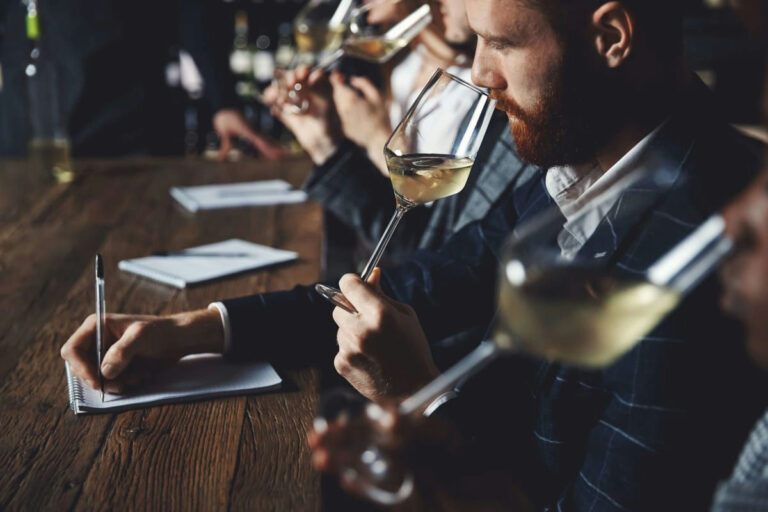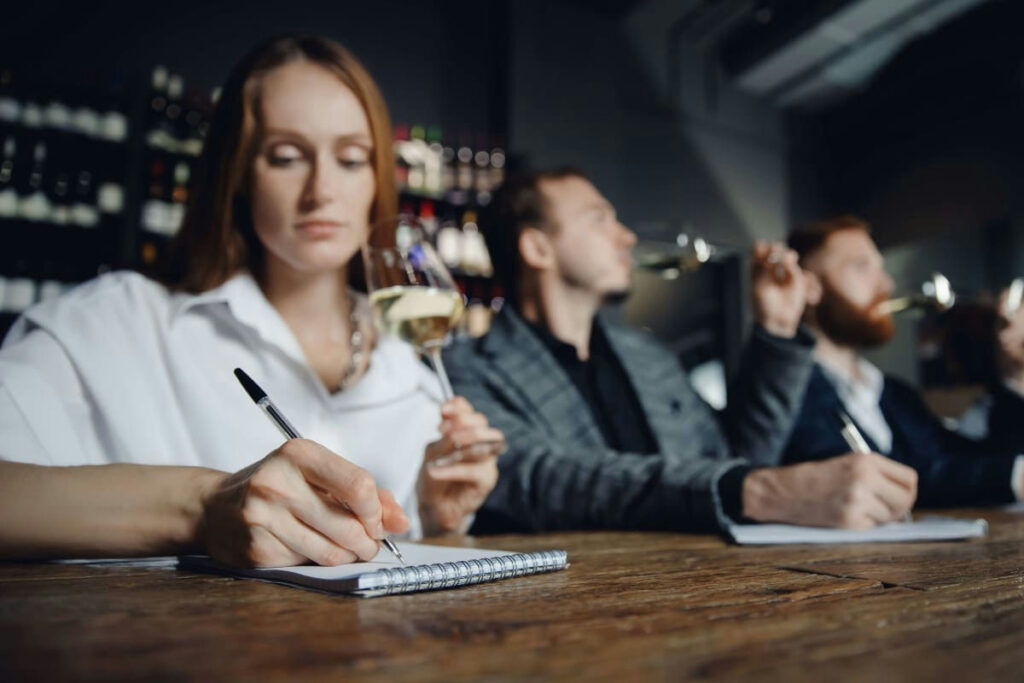
Champagne, more than just a sparkling drink, is the result of a sophisticated crafting process that makes it a unique sensory experience. Understanding champagne aromas is essential to fully appreciate every sip of this iconic sparkling wine. Each bottle tells a story – a narrative of terroir, grape varieties, and winemaking techniques. The aromas are the words. First, it is crucial to know the three main types of champagne aromas. Primary aromas come from the grapes themselves and vary according to the grape varieties used. Chardonnay, for example, imparts notes of green fruits such as apple and pear, while Pinot Noir brings aromas of red fruits such as cherry and strawberry. Pinot Meunier, on the other hand, adds a touch of fruitiness and floral intensity. Secondary aromas result from the fermentation process. A young champagne will often present notes of yeast and toasted bread, stemming from bottle fermentation. These aromas can evolve depending on the aging time on lees, giving the champagne additional complexity and a rich olfactory structure. Finally, tertiary aromas appear due to bottle aging. With prolonged storage, notes of dried fruits like almond or hazelnut and roasted notes like coffee and cocoa may develop. These aromas, called ‘bouquet’, are often the most subtle and appreciated by connoisseurs. To recognize these aromas, it is crucial to consider the terroir – the soil, climate, and human expertise. In Champagne, the diversity of microclimates and soil types creates impressive aromatic richness. Sun exposure, soil composition, and precipitation directly influence the final aromatic profile of the wine. In sum, understanding the fundamentals of champagne aromas requires a methodical approach to grasp the influence of grape varieties, winemaking processes, and bottle aging. This in-depth knowledge allows you to enter the refined and complex world of champagne, where each aroma tells a unique story.
To become a savvy taster, it is essential to master certain techniques to identify and describe champagne aromas. Let’s start with visual observation, often overlooked but the first crucial step of any tasting. Examine the color of the champagne, which varies from pale yellow to golden to shades of rosé. This color can give clues about the age of the wine and its grape composition. Observing the bubbles is also important: their fineness and persistence can reflect the quality of fermentation and wine aging. Then move on to the olfactory examination, the core of tasting. To fully perceive the aromas, pour a small amount of champagne into a tulip glass, designed to concentrate aromas. Gently swirl the glass to release aromatic compounds and bring your nose to the glass opening. Take a first gentle inhalation to detect the most volatile aromas, then a deeper one to reveal more subtle layers. To better identify aromas, it is useful to rely on an ‘aroma wheel’, a visual tool that organizes different aromas into categories. For example, you can distinguish fruity aromas (lemon, apple, red fruits), floral (linden, acacia), spicy (vanilla, pepper), or empyreumatic (toast, caramel). First identify the broad families, then refine your analysis. Furthermore, retro-olfaction is an advanced technique that involves holding a small amount of champagne in your mouth, inhaling through the nose, then exhaling gently. This method allows you to sense aromas through the retronasal pathways, adding an extra dimension to the tasting. Finally, during the tasting phase, pay attention to the balance between acidity, sugar, and bitterness. Note the texture, length on the palate, and persistence of aromas. A good champagne reveals its aromas in a harmonious way, without any element excessively dominating. These techniques, while simple to explain, require practice and patience. The more you taste regularly and thoughtfully, the more you will refine your ability to identify and appreciate the aromatic complexity of champagne.

Each taster develops over time and experience their own tasting profile, a mental map of aromas and sensations unique to them. Developing this profile requires a methodical and thoughtful approach, going beyond simple tasting. Start by keeping a tasting journal where you systematically record your observations. Write down the name of the champagne, the year of production, the grape varieties used, and any additional information. Then describe your visual, olfactory, and gustatory impressions. For example, note the color, the fineness of bubbles, and the aromas perceived on the nose and palate. Try to use precise words for each aroma: instead of simply saying ‘fruity’, specify ‘green apple’ or ‘black cherry’. To refine your skills, regularly practice with different champagne bottles from various houses and terroirs. Compare these experiences to identify differences and similarities between each wine. Also, participate in tastings organized by professionals or join tasting clubs. These settings offer a unique opportunity to exchange with other enthusiasts and enrich your understanding through discussions and comparisons. Using an aroma guide can also be useful to expand your olfactory vocabulary. Regularly practice recognizing aromas by smelling samples of fruits, flowers, spices, and other products. This practice will develop your olfactory memory and help you more easily identify aromas in champagne. Finally, remember that tasting is a global sensory experience. Take into account the environment in which you taste. A calm atmosphere, appropriate temperature, and suitable glass can greatly influence your perception of aromas. Be also mindful of your state of mind and physical condition, as they can alter your senses. By developing your own tasting profile, you will gain confidence and skill. You will not only appreciate each champagne with greater depth but also share your discoveries with other enthusiasts, enriching the collective tasting experience. In summary, mastering the art of tasting champagne is a personal and sensory journey that improves day by day, glass by glass.
Necessary cookies are absolutely essential for the website to function properly. This category only includes cookies that ensures basic functionalities and security features of the website. These cookies do not store any personal information.
Any cookies that may not be particularly necessary for the website to function and is used specifically to collect user personal data via analytics, ads, other embedded contents are termed as non-necessary cookies. It is mandatory to procure user consent prior to running these cookies on your website.